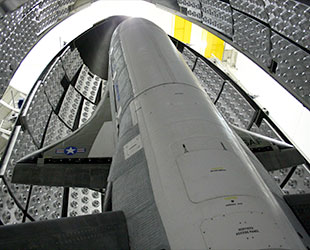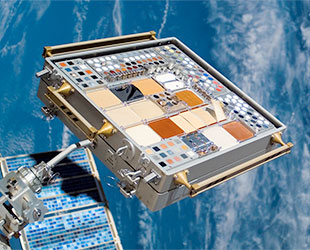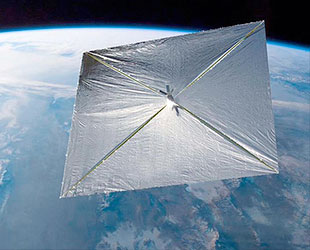May 20, 2015 – The U.S. Air Force's secret-but-storied X-37B mini-space shuttle is back in orbit, having lifted off on its fourth clandestine mission Wednesday (May 20), with a prototype solar sail in tow.
The unmanned Orbital Test Vehicle (OTV) launched atop a United Launch Alliance (ULA) Atlas V rocket from Cape Canaveral Air Force Station in Florida at 11:05 a.m. EDT (1505 GMT). Hitching a ride with the booster's upper stage were ten small satellites, called CubeSats, to be deployed separately from the space plane – including The Planetary Society's first LightSail.
The X-37B's ascent marked the start of a new direction for the 29-foot-long (9-meter) classified shuttle.
"With the success of the first three missions, we're able to shift our focus from checkouts of the vehicle to testing of experimental payloads," Randy Walden, director of the Air Force's Rapid Capabilities Office, said in a statement.
During the OTV-4 mission, the winged shuttle will test the performance an Air Force experimental propulsion system. It is also flying a NASA advanced materials investigation.

The X-37B Orbital Test Vehicle is seen being encapsulated in its payload fairing for launch before its first flight in 2010. (USAF) |
The thruster to be tested on the X-37B is a type of electric device that produces thrust by ionizing and accelerating a noble gas, usually xenon. Called a "Hall" thruster after the American physicist Edwin Hall who discovered the effect, the system provides significantly greater specific impulse, or fuel economy, over conventional engines.
The propulsion experiment is a modified version of the unit used to propel the first three of the Air Force's Advanced Extremely High Frequency communications satellites that were launched between 2010 and 2013.
NASA's Materials Exposure and Technology Innovation in Space (METIS) payload builds upon more than a decade of research conducted on the International Space Station. The experiment will expose almost 100 different materials samples to space for more than 200 days.
METIS includes polymers, composites, and coatings that are potential candidates to replace obsolescent materials with environmentally-friendly options. This flight is offering researchers a chance to collect additional data in advance of the next materials exposure experiment to be performed on the space station in a couple of years.

A NASA materials investigation, like MISSE seen here aboard the space station in 2007, is flying on the OTV-4 mission. (NASA) |
"We're very pleased with the experiments lined-up for our fourth mission," Walden stated. "We'll continue to evaluate improvements to the space vehicle's performance, but we are honored to host these collaborative experiments that'll help advance the state-of-the-art for space technology."
Although separate from the X-37B, the Planetary Society's LightSail is also aimed at advancing space travel.
The prototype for the non-profit's primary mission, targeted for launch next year, this first LightSail won't attempt solar sailing — it will be too close to the Earth to try. But it will demonstrate deploying the large (344 sq. ft. or 32 sq. m.) Mylar surface that the next LightSail will use to reflect the photons from the sun to accelerate it forward.
"We expect to be in space [on this mission] for about 28 days when deployment will occur, though we may deploy sooner," Bill Nye, the CEO of The Planetary Society, said. "We expect to remain in orbit for anywhere between two and ten days before atmospheric drag pulls the spacecraft down and it burns up on re-entry."

Fully-deployed, LightSail will span 344 sq. feet (32 sq. m.). (TPS) |
As with the prior flights, the duration of the X-37B's OTV-4 mission has not been released.
The third mission ended with a landing at Vandenberg Air Force Base in California on Oct. 17, 2014 after 674 days on orbit. In total, the Air Force's two X-37B vehicles have spent 1,367 days in space, more than all of NASA's space shuttles combined.
The X-37 began as a NASA research project. Lacking the funding needed to move the program forward, the civilian space agency transferred the space plane to DARPA (the Defense Advanced Research Agency) in 2004. Two years later, the Air Force took over responsibility for the project.
